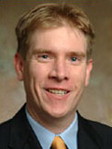
The illustrative nature of this Atlas of the Oral and Maxillofacial Surgery Clinics of North America lends itself extremely well to the discussion of injury to the peripheral branches of the trigeminal nerve. Injuries to the lingual nerve and inferior alveolar nerve are by their very nature difficult to visualize and this contributes to our diagnostic and therapeutic dilemmas. This issue’s focus is primarily on the specific branches of the mandibular or third division of the trigeminal nerve. With the diagrams, photos, and figures provided by this edition’s authors, it is my hope that maxillofacial surgeons will be provided with a clearer and more precise look at the nerves that they work so closely with, and around, each day. The more sophisticated our knowledge is of nerve injury, peripheral nerve repair, and peripheral nerve regeneration, the better our ability will be to provide future patients with optimal care.
Dr Goran Lundborg wrote in 1988 that “Still, our approach to peripheral nerve lesions tends to be remarkably non-biological. The surgical procedure for treatment of nerve severance remains basically a matter of preparing the nerve ends adequately, placing sutures in the right positions and using the right optical magnification. The development of microsurgical techniques has helped to improve considerably the results in selected situations. However, we lack a corresponding development of techniques for controlling and manipulating the local microenvironment when surgical techniques cannot be further refined.” Almost a quarter of a century later, the same need remains.
These future advances in restoring patients with peripheral nerve injuries to improved outcomes will take place on the “biological battleground” which rages beyond the magnified view of the microscope. Optimizing the body’s own ability to regenerate peripheral nerves through therapeutic manipulation of the response to injury at the cellular level has the potential to keep more neurons viable, encourage their axons to cross longer gaps, and provide more precise directional regeneration.
In few fields is the need for translational research more crucial to enable us to provide better care for our patients. Bridging the gap between basic scientists and clinicians is without doubt the answer to bridging the gap at nerve transections. It is my hope that this atlas will stimulate future oral and maxillofacial surgeons to contribute to that end.
Stay updated, free dental videos. Join our Telegram channel

VIDEdental - Online dental courses


